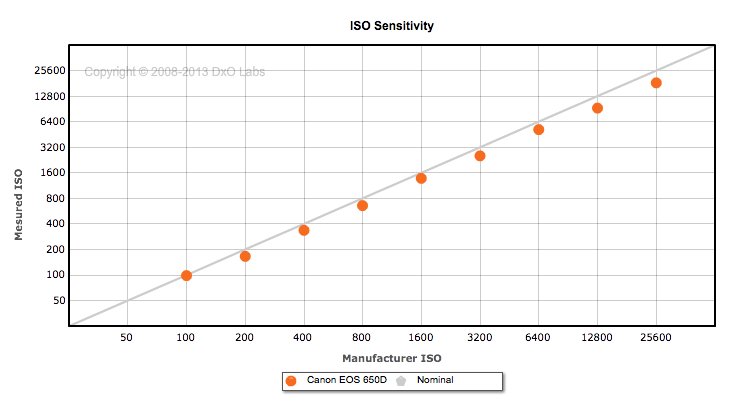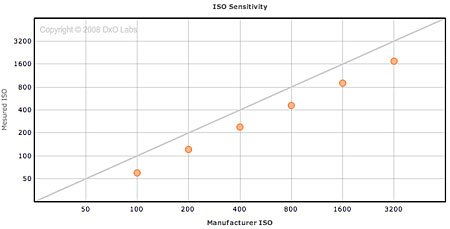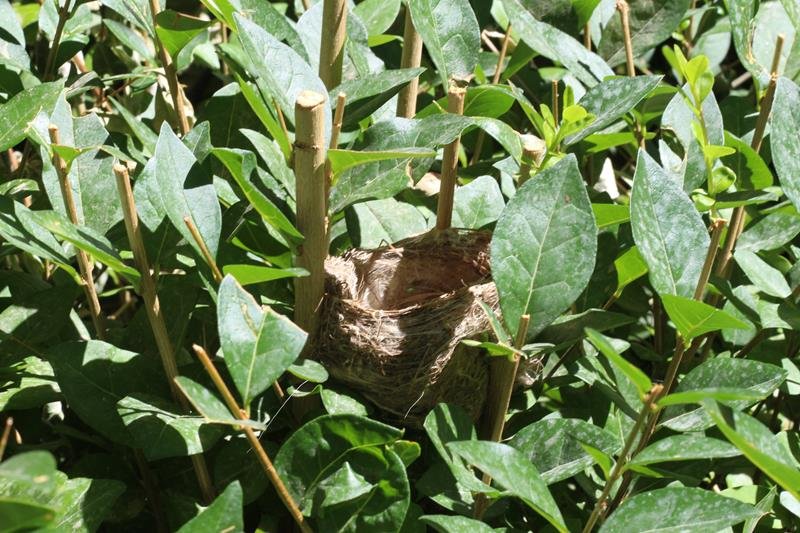Sunny 16 assumes that the ISO is 100. With film (when this rule came about) that worked because the dynamic range of the film people were shooting (print) was sufficient to capture the scene when they lacked a camera that had a light meter in it. Even then people would sometimes tweak their exposures (shooting Velvia 50 at 80). Those who were really into it didn't even trust the label and would buy a brick of film, shoot one roll for standardized tests and stick the rest of it in the freezer (keeping note of the batch number) so that they can develop it perfectly for what its actual ISO and conditions where. Others would just do a clip test on each roll.
There are no digital cameras that lack a light meter (that I'm aware of at least). That brings us to the ISO sensitivity of the sensor. Going from DxO for the Canon 650D, its actually fairly accurate:

Other cameras can be less accurate (related article: ISO Lies: When ISO 100 is really 72:

(source: adorama.com)
This (not yours) camera is almost a full stop stop slower than what its ISO claims. If you tried shooting the Sunny 16 with that camera, you'd be getting underexposed images consistently.
Next, the Sunny 16 is just a ballpark estimate. Unless you know exactly what the amount of light and what you want to expose for you are getting (varies with latitude and time of day quite substantially), you can be off. Not everyone knows that the full moon is 250 c/ft2 or how to translate that into the proper exposure.
Abiding with the Sunny 16 only is for those people who are trying to take a photo with a holga (you have 1/100 or 1/125 for shutter speed and f/8 or maybe f/11 for the aperture) and need to pick the right film to load in the camera (is it cloudy? sunny? indoors?).
For everyone else, if you've got a light meter, use it. Ballpark estimates are for when you aren't sure and just want a photo in the ballpark. Its better to be sure if you can be.
In your case, Sunny 16 didn't fail. It captured an image that was not completely illuminated by the noon sun (it was in the shade). It captured the leaves quite acceptably, though the subject that you were really after is completely in the shade.
Some random advice for the scene:
- Put a polarizer on the lens. This will cut down the reflections from nonmetallic surfaces (such as leaves) allowing you to capture the green of the leaves rather than the silver of the reflected sun. It also cuts down the necessary dynamic range.
- Use the 'partial' metering mode (9% at the center) or center weighted and compose the image the same as you did (with the nest at the center) (see page 115 of the manual for metering modes). This lets the camera know what you are interested in actually photographing and exposing properly.
I'll also point out that I prefer the first photograph over the second.



